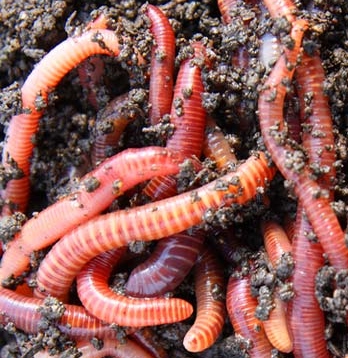Red Wiggler Express - Truths
Red Wiggler Express - Truths
Blog Article
Red Wiggler Express Things To Know Before You Buy
Table of Contents7 Easy Facts About Red Wiggler Express ExplainedThe Main Principles Of Red Wiggler Express The Facts About Red Wiggler Express UncoveredNot known Facts About Red Wiggler ExpressA Biased View of Red Wiggler Express
Some worm farmers in fact withhold food and water to imitate drought problems and bump up cocoon production. We do not suggest this for the home composter as it has the possible to kill off a lot of of your best worms. Since you know everything about the red worm it's time to go out and locate an excellent supplier and obtain a pound or more and begin your own worm ranch.This overview will certainly present you to the red wiggler to consist of a much deeper on dive on the types and info on breeding, life process, and reproduction. We'll discuss how to keep red wigglers and why they need to be the go-to worm for most composters. The red wiggler (binomial name: eisenia fetida) is the world's most usual composting worm.
A research study recommends that the two can produce hybrid children, a phenomenon which needs to otherwise be taken into consideration impossible in between many worm species. Enjoyable truth: The "fetid" part of the binomial name refers to what some claim is a fetid secretion the red wiggler uses to repel predators. I've been dealing with them for years and never ever observed this! The composition of a red wiggler appears like that of other common earthworms; a long-segmented body begins at the sharp head and ends at a slightly-flatted tail.
Rumored Buzz on Red Wiggler Express
The digestive system is straightforward, starting at the mouth where the worm begins to consume its food before passing it on to the pharynx. The vocal cords is a muscular area which acts like a pump to draw food into the mouth before pumping it out into the esophagus. The esophagus is narrow and thin-walled and serves as the "waiting room" for the gizzard.
Note: This need for grinding is why grit is advised in a worm container. The worm includes no native grinding capacity so the worm depends on consumed grit to assist grind its food in the gizzard. The tummy is where the initial chemical breakdown of food occurs with the assistance of a protein-busting enzyme.

Within 42 days, these baby worms will get to sex-related maturation as evidenced by the introduction of the clitellum. A fully grown red wiggler can be expected to live in between one to 3 years. The magnificent red wiggler may in some cases be utilized as a bait worm for smaller fish or as a protein resource for hens and reptiles.
The Of Red Wiggler Express
And as discussed above, they are one of the most typical composting worm in the world. However why? Well there's most likely not just one factor. Instead, a mix of expense, hardiness, and convenience in a variety of temperatures makes it one of the most suitable composting worm for the majority of new vermicomposters. Red wigglers and their cocoons can survive in a large range of problems.
This is a typical practice among worm carriers who don't intend to risk having the worms being in a warm or cool storehouse over the weekend break. Worm growers are not saving worms in a scenario where they prepare to deliver. The worms need to be collected from their habitat first, so cultivators will often establish a Friday or Saturday deadline in order to harvest in time for a Monday shipment.
To reduce shipping expense, you might intend to see if there are any kind of close-by "Mommy and Pop" shops via a Google search. If you do not find what you're trying to find, after that I invite you to examine out worms via the Urban Worm Company! The amount of red wigglers you acquire should be exclusively reliant upon the surface you have readily available for vermicomposting.
I call these the "Big 3" elements of worm container upkeep. As mentioned previously, red wigglers have a wide temperature tolerance.
How Red Wiggler Express can Save You Time, Stress, and Money.

For finest outcomes, you want to fire for regarding 60-70% wetness degree. The most basic examination for this is to squeeze a handful as difficult as you can. At the best moisture levels which is just under 70% that handful must hardly yield one drop of liquid. pH in a worm container is pretty easy to preserve.


The European Nightcrawler, the larger cousin of the red wiggler, is just as starved and additionally creates a great bait worm. It prefers a bit of a cooler setting than the red wiggler. The African Nightcrawler is a huge composting worm and makes a gorgeous, granular actors.
The Indian Blue is starved, but also likes a warmer environment and it also exhibits a tendency to get away the container. The red wiggler is a hardy worm and isn't as particular regarding its climate. I like to call it the Ford Taurus of vermicomposting worms; you won't boast to your hardcore composting pals that you have them, yet they will certainly offer you well.
The 7-Minute Rule for Red Wiggler Express
Surefire to life 1/2 pound of hand arranged Red Wigglers/Compost with worms (+500 worms) in different stages of life from cocoons to grow worms in their natural environment/bedding. Hand arranged worms reduced the disturbance of the worms therefore guaranteeing real-time shipment. Red wiggler worms do not such as resonances or light.
Report this page